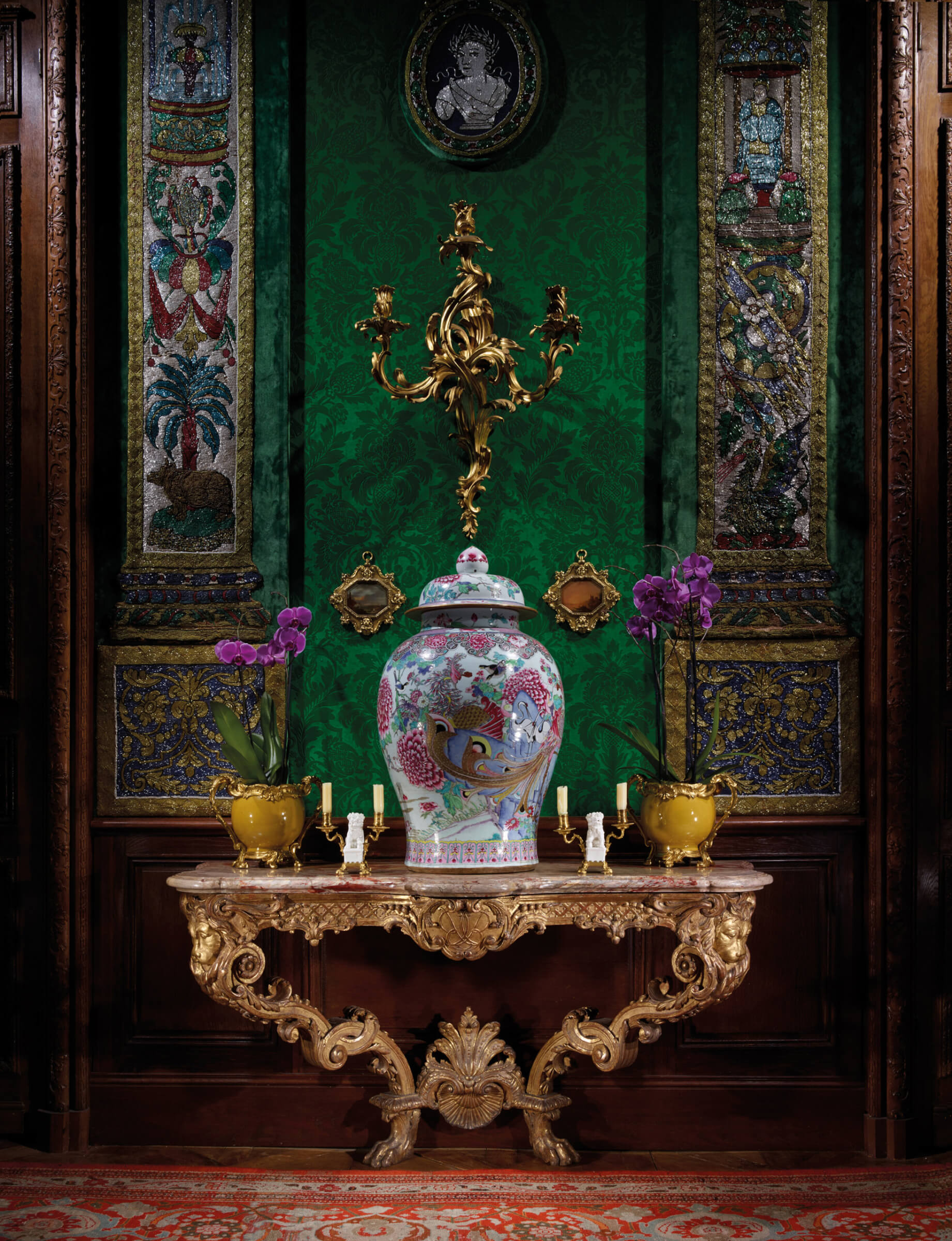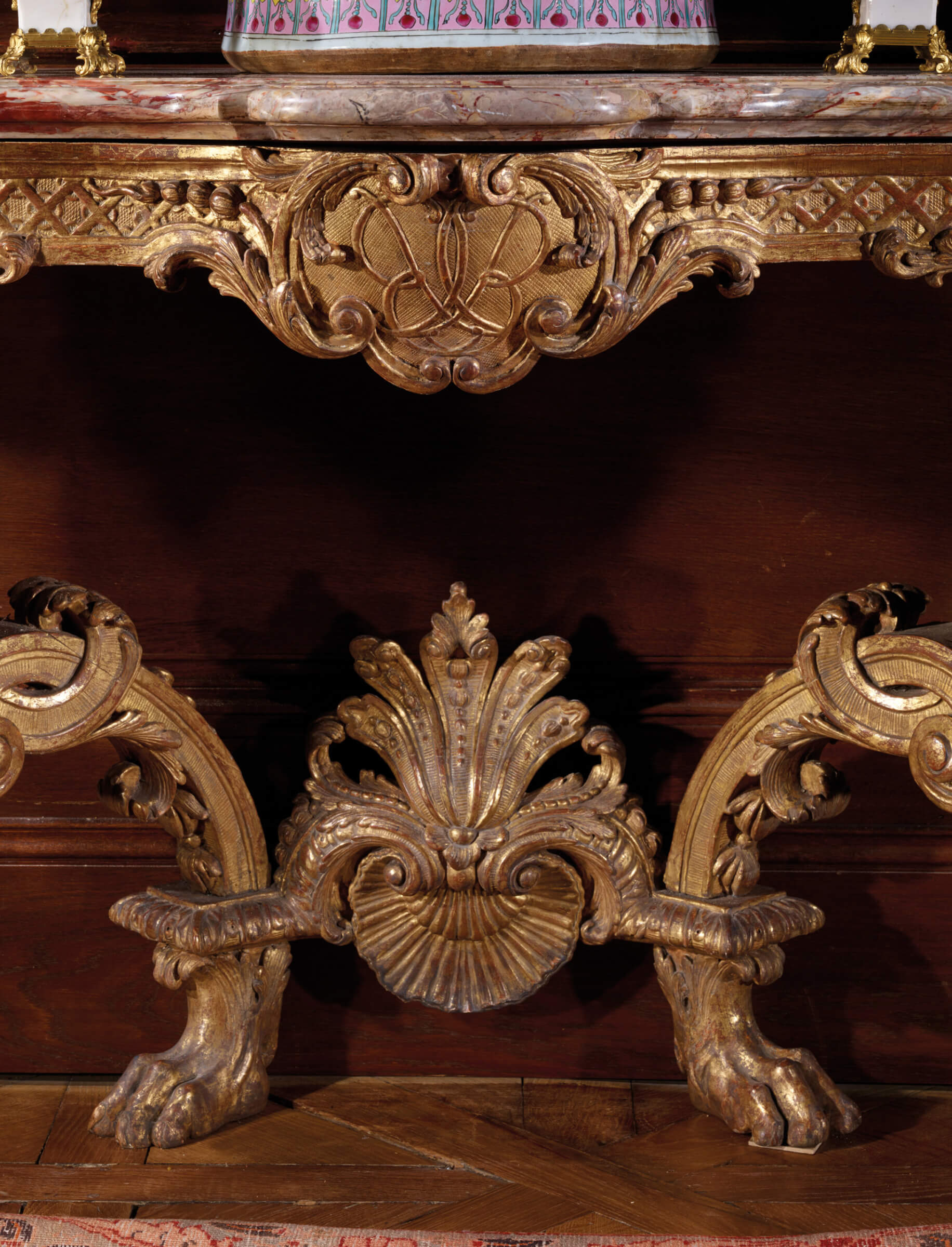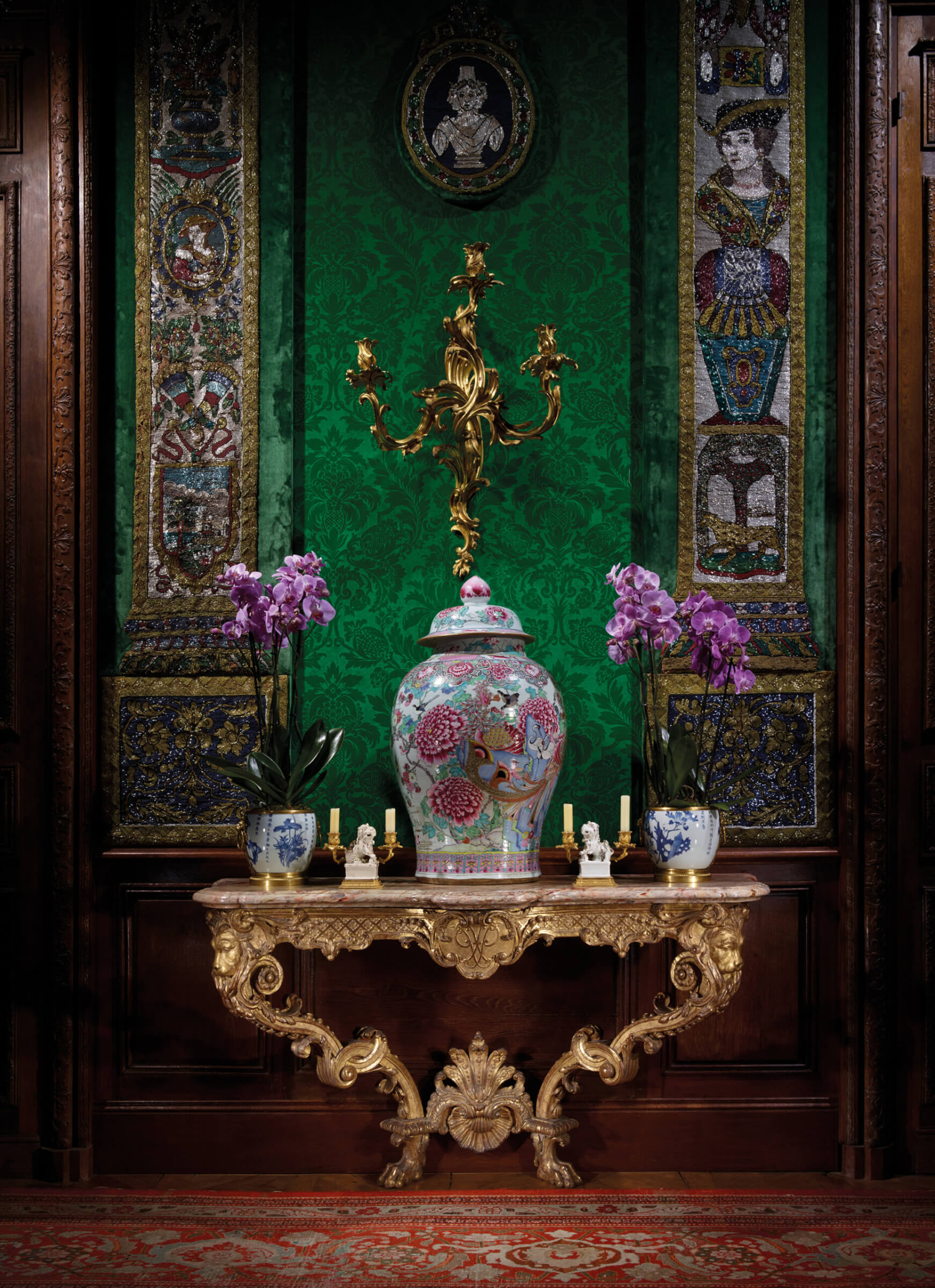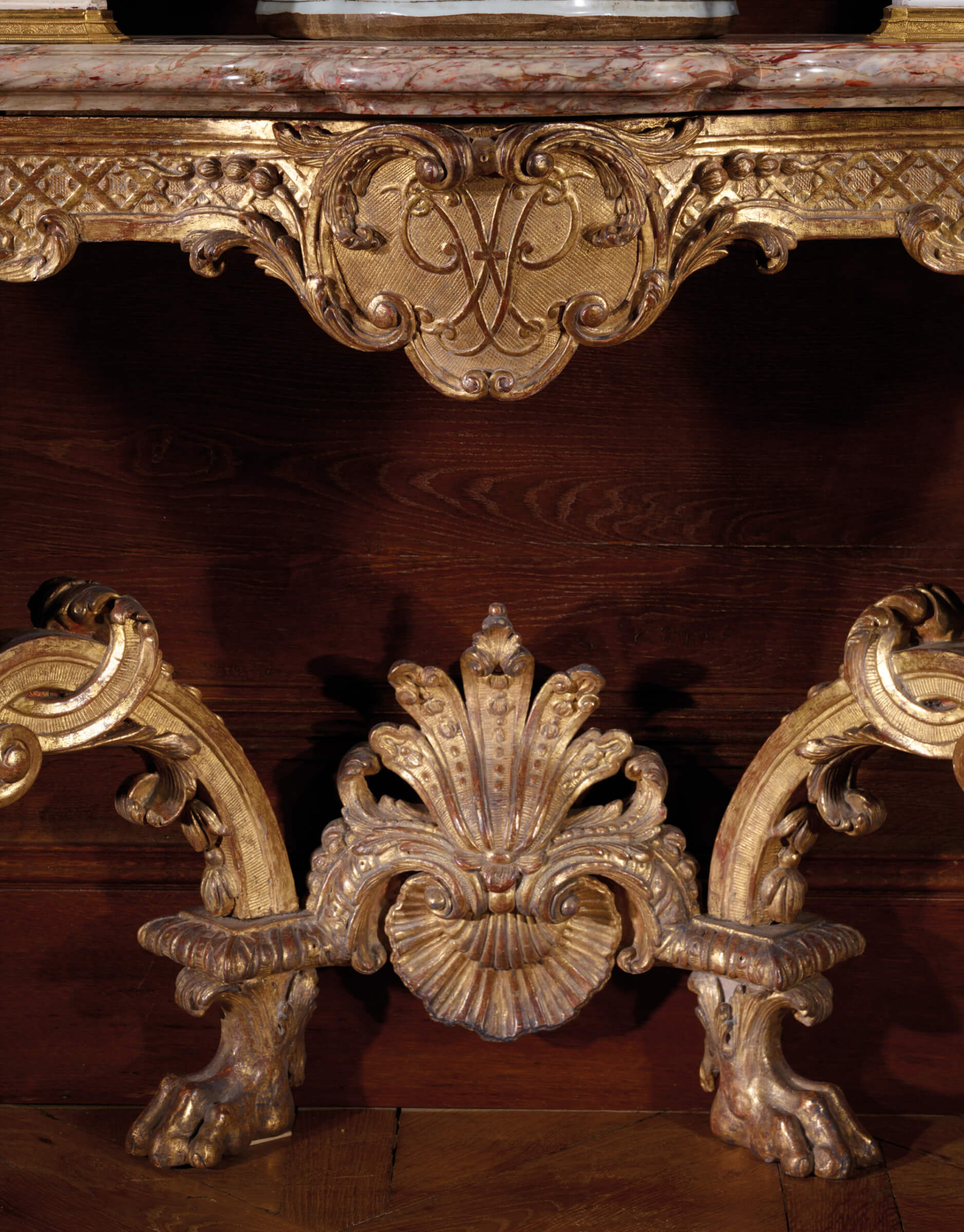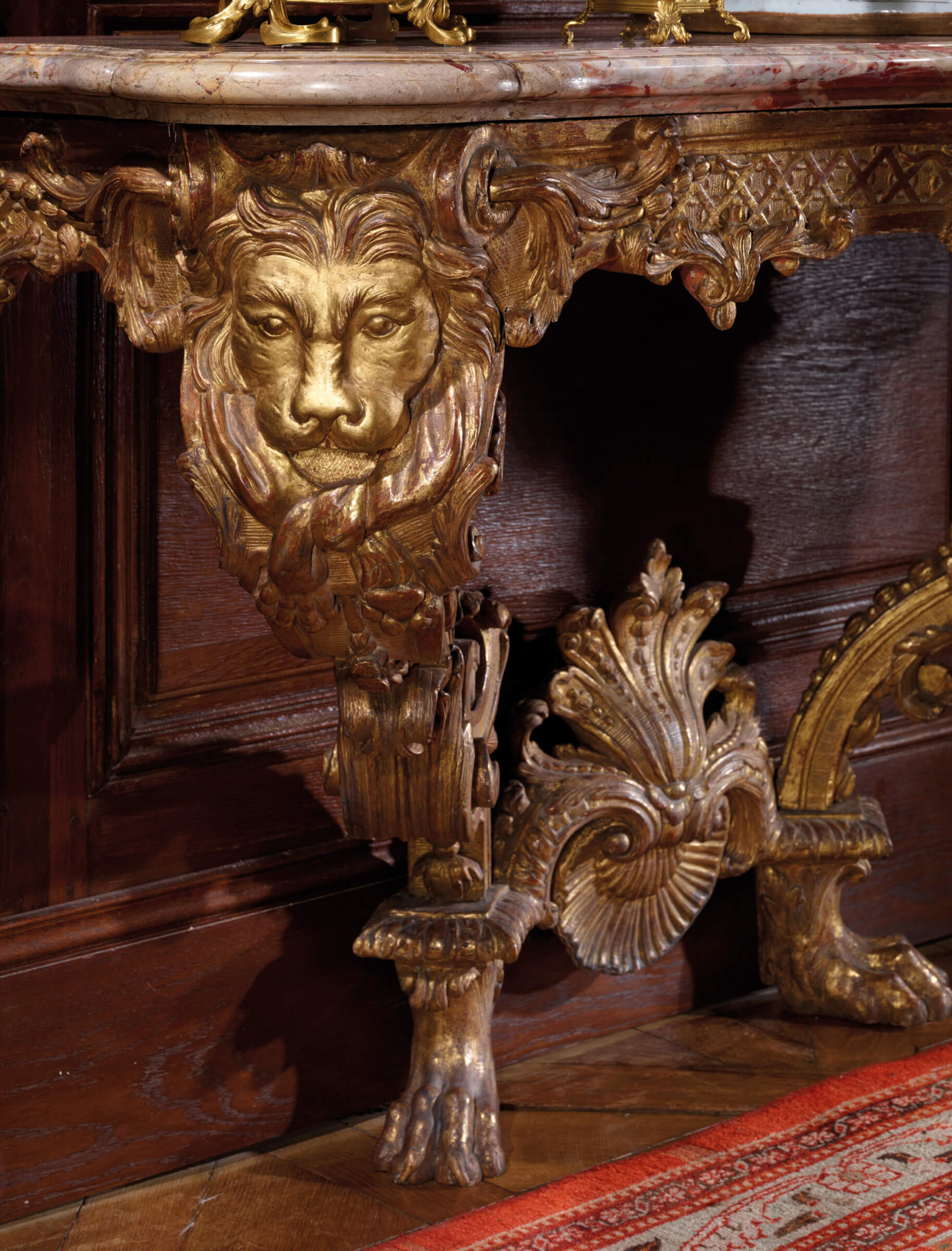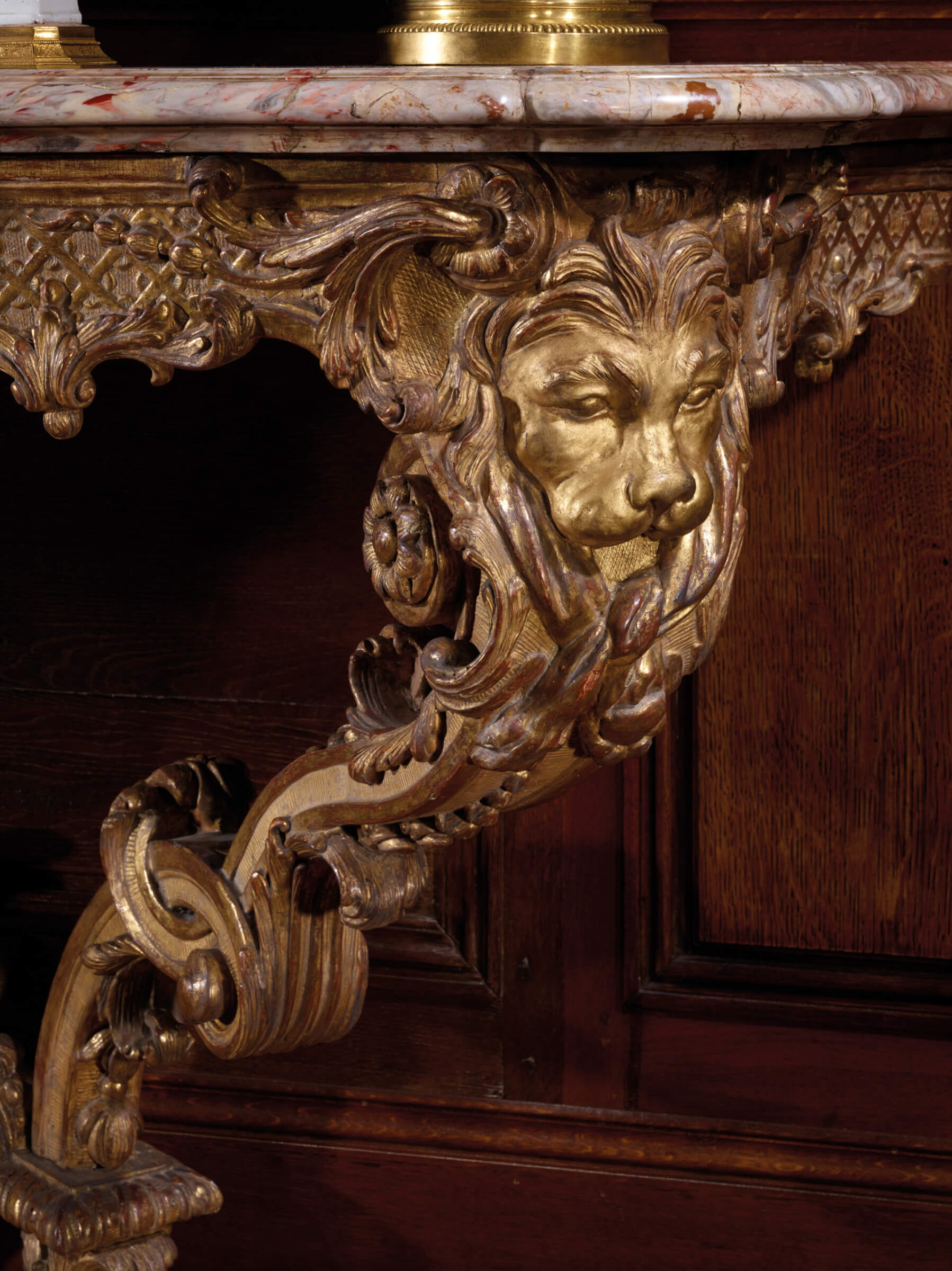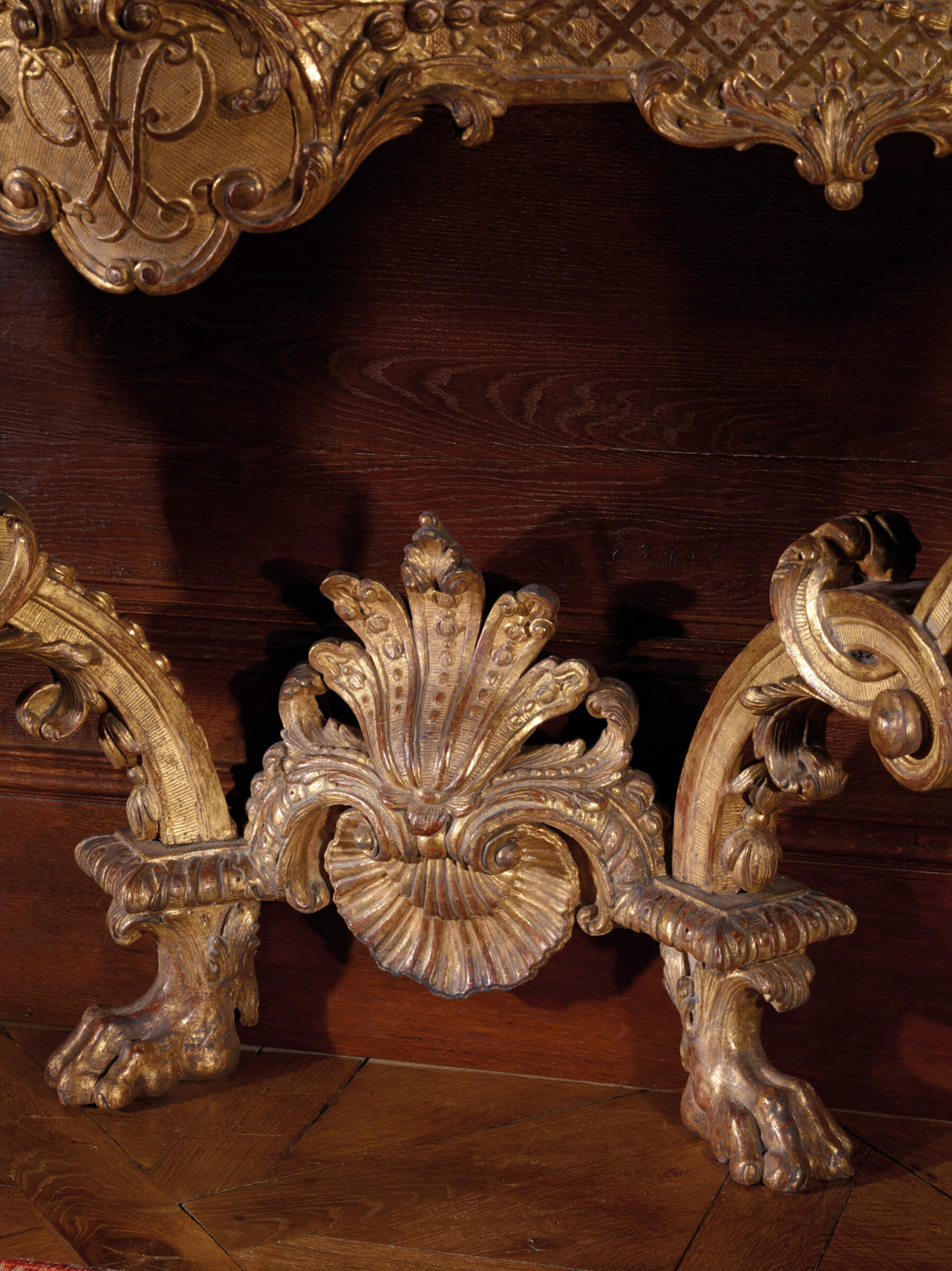

Carved and gilded oak; Sarrancolin marble.
H. 78 cm. (30 ¾ in.); W. 164 cm. (64 ½ in.); D. 62 cm. (24 ½ in.).
PROVENANCE: most certainly executed for the court of Charles III Philip (born 4th November 1661 in Neuburg, died 31st December 1742 in Mannheim), of the House of Wittelsbach, Elector Palatine, Count Palatine of Neuburg, Duke of Juliers and Duke of Berg from 1716 to 1742 and Count of Megen from 1716 to 1728; collection of the jeweller Miran Eknayan (1892-1985), Paris.
This extraordinary pair of carved and gilded oak consoles was most certainly executed for the Palatine Court of Charles III Philip (1661-1742), Count Palatine of Neuburg and Elector Palatine from 1716 to 1742. They are each adorned with a cipher, which can be seen in a cartouche with a fretted background adorning the centre of their rails, and are monograms that might correspond to those of a couple; they display numerous similarities with the monograms then used by the Prince-Electors of the Palatinate and Bavaria, most notably featuring, in cursive letters, two E’s facing each other, usually standing in French—the then official language spoken in all the courts of Europe—for the word “Electeur”. This is complemented by the imposing lion’s muzzles carved at the corners of the two consoles, as well as the lion’s claws forming their feet, symbols of the Palatinate lion—Pfälzer Löwe—the heraldic emblem of the Palatinate, also belonging to the family coat of arms of the House of Wittelsbach.
These console tables feature many similarities with French models from the Régence period. Their general design is not unlike that of the console, now in the Louvre, from the Grand Cabinet on the ground floor of the Château of Bercy, which was carved around 1713 by Jules Degoullons and associates for Charles-Henri II of Malon de Bercy (1678-1742). These models, which are still distinguishable by their rigorous symmetry, were deemed a genuine innovation at the time and met with immediate success among Parisian craftsmen, who were instrumental in their promotion, particularly among the Principalities of Southern Germany.
